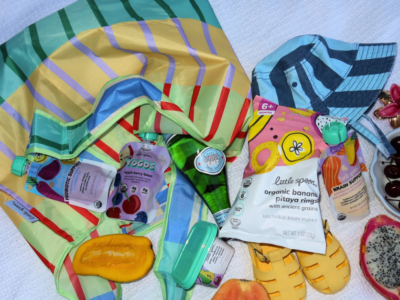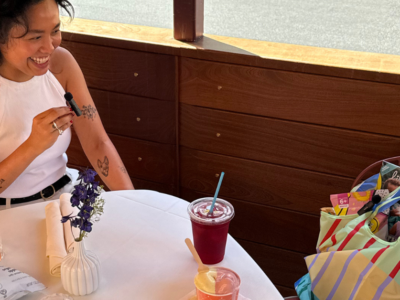Halloween can be a tricky time for parents, with its seemingly endless stream of candy and treats. As a mom of a preschooler, I understand that feeling. I’d like to start by saying there is no right way to handle Halloween and everyone has their own parameters for how they celebrate the holiday. I will lay out some helpful information to help you make the best decision for your family.
Sugar Recommendations
Are my kids allowed to have sugar? How much sugar is too much sugar? These are some of the most common questions, so first let’s start with the official recommendation from the 2020 US Dietary Guidelines. The Guidelines recommend that children under 2 years old avoid foods and beverages with added sugar and that children 2-18 years old keep added sugar to less than 10% of calories per day. Now when I apply this to real life as a parent, I think there can be some leeway. For example, for children 0-1 years old, I do think it’s possible to aim for no added sugar. But from 1-2 years old, children will inevitably have sugar, usually starting with their 1st birthday celebration. Like most parents, I offered my son cake (filled with sugar) on his 1st birthday! And during that year, kids will start attending birthday parties and other events with sugary treats during which, I believe they can and should partake in the festivities including having treats if they desire. Having some sugar on occasion is unavoidable and trying to limit sugar to 0 above the age of 1 can have the opposite effect…
The Scarcity Mindset
Here’s what I mean: imagine someone telling you that you can never have chocolate ice cream again. If someone told me that, I’d constantly be thinking of chocolate ice cream. And if I managed to get my hands on it, I would eat so much of it, more than my hunger levels, because it may be the last chance for me to taste it. That’s what happens when we tell our children that something is off-limits, or a certain food is “bad.” It makes that food a “special” or “charged” food – elevating its status to something that’s desired even more. And once they manage to find it, the scarcity mentality sets in, and they binge on it. Thinking of this in the context of Halloween, not allowing kids to have candy or for example, only allowing them to have 1 piece, creates a scarcity mentality.
Myth vs. Fact
Myth: If I let my child eat as much candy as they want, they will eat until they get sick.
Fact: Children are more naturally in-tune with their hunger/fullness cues than we are as adults. Given the freedom to eat candy, many kids will eat much less than you’d expect. Some kids may eat until they get sick, but that serves as a feedback mechanism to them where we can gently say “when I eat too much of XYZ past when my tummy feels full, I start to feel sick too.” It becomes a learning experience.
Myth: If I let my child eat a lot of sugar, they will become addicted to sugar.
Fact: Letting your child eat more sugar than usual on Halloween, or even the week of Halloween, will not create an addiction.
Myth: My child will be at risk for chronic disease if they eat candy on Halloween.
Fact: Having some candy on Halloween, or the week of Halloween, is not going to increase their risk of chronic disease. Long-term excessive sugar intake is what becomes problematic.
Myth: I’m a “bad parent” if I let my child eat sugar on Halloween.
Fact: Absolutely not. We are all making the best decisions we can for our families.
All in all, it’s helpful to bring Halloween into the context of family roles. As the parents, we are able to decide what, when and where to offer food and kids are able to decide how much of it they’d like to eat. With this myth-busting information, I hope you can make Halloween choices you feel good about and enjoy the holiday!



